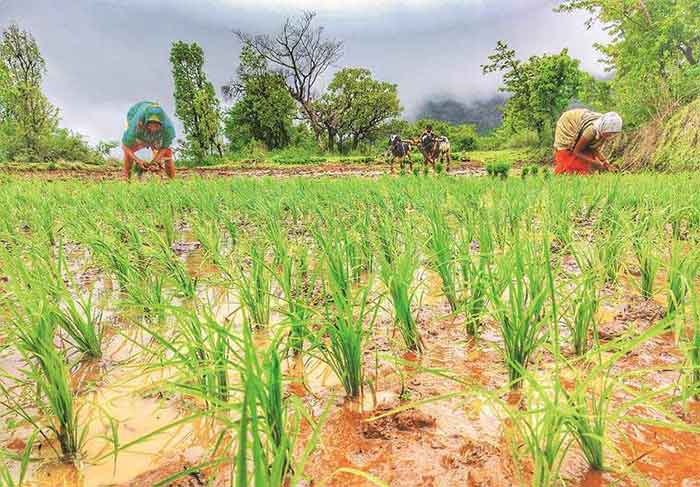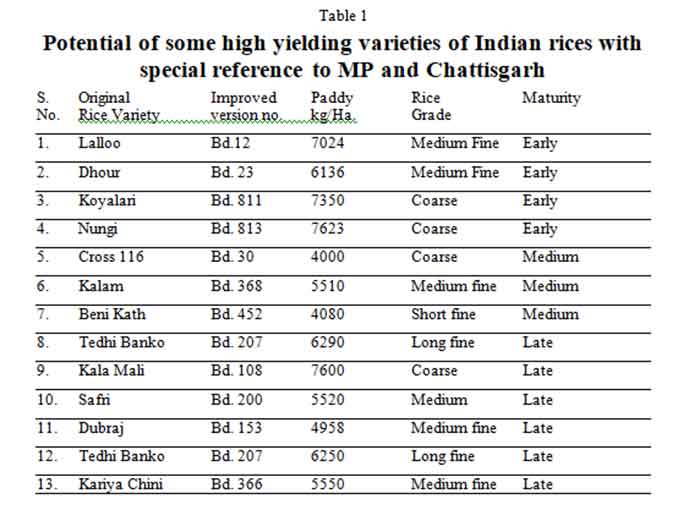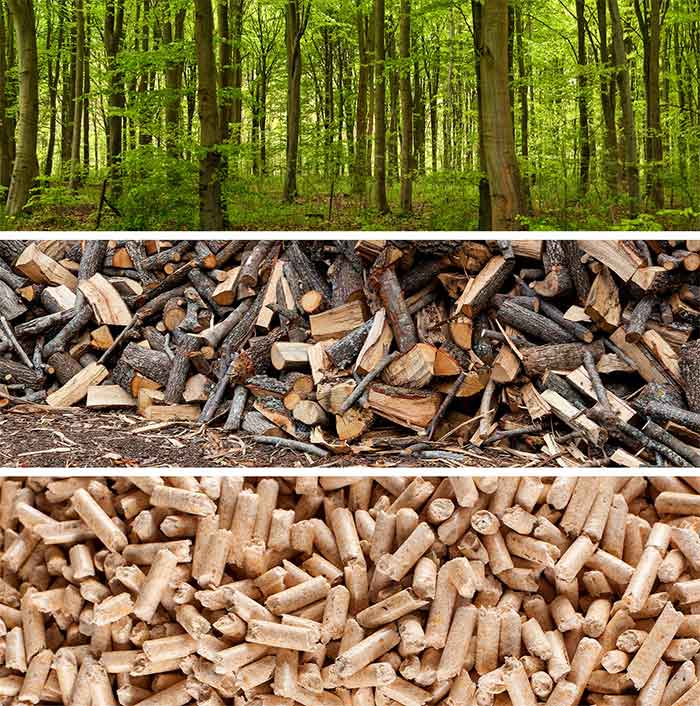
According to recent reports the Himachal Pradesh government has decided to initiate efforts to save endangered indigenous traditional red rice varieties by growing it in government farms and then distributing seeds to farmers. These rice varieties are widely believed to have exceptional nutrition and even medicinal values and with growing realization of this are fetching a high price in the market as well. Why with these exceptional qualities the red varieties started becoming endangered should also be investigated.
What is particularly encouraging about the effort of the state agriculture department, as reported, is that it will be trying to ensure protection at the level of fields of farmers. In the past some efforts to save endangered varieties were only at the level of gene banks from where these were very conveniently procured by multinational companies who said thank you and went on to use this genetic wealth to build their own empire which exploited farmers of developing countries with their patented seeds. So it is very good that the efforts to save traditional seeds should spread to the fields of farmers and should not be confined to gene banks.
However the government should realize the suitability of various regions or fields for these varieties instead of trying to spread indiscriminately. The beauty and wisdom of diverse traditional varieties is related precisely to there being different varieties for different types of field conditions and if we ignore this simple precept in the case of varieties for which a high price has suddenly become available then this will create problems which are best avoided.
One hopes that the state agriculture department will extend this initiative to a wider campaign , utilizing well the wisdom of experienced and elderly farmers. In the neighboring state of Uttarakhand a great contribution to protection of traditional rice varieties ( as well as other crop varieties ) was made by the beej bachao andolan ( save the seeds movement ). Vijay Jardhari took the lead in this initiative which soon had the enthusiastic participation of all the chipko movement colleagues of Hemvalghati region, and then spread more widely. These activists took out foot marches in various parts of Uttarakhand to spread consciousness regarding the need to protect indigenous varieties while at the same time collecting various traditional seed varieties to grow and share.. Kunwar Prasun, leading activist of chipko movement and this movement, documented 328 traditional rice varieties,( including red rice varieties), with their various characteristics and very useful as well as interesting details. These notes in his handwriting were given to us by his family members and then soon published as the first chapter of a collection of his writings soon after his untimely death ( book in Hindi titled Zindagi Ek Andolan—Kunwar Prasun Kaa Rachna Sansar—edited and published by Madhu and Bharat Dogra).This documentation of varieties includes several varieties which give high yields without using chemical fertilizers and pesticides, but what Prasun used to emphasize was that it is not only the yield but the taste , nutrition, health benefits, suitability for special needs, suitability for particular growing conditions, costs of growing and a host of other factors which need to be considered for understanding the true value of very diverse traditional varieties.. A discourse based only on yield is a very narrow, unscientific and one-dimensional discourse, he often told me.
If we consider these diverse aspects then of course the diverse traditional varieties provide a much more useful and rich base compared to the green revolution HYVs with their narrow genetic base. There is absolutely no doubt about this. But if one is to persist with the narrow, unscientific, one-dimensional discourse based on high yield alone, even then there is a lot of evidence of several traditional varieties giving high yields ( equivalent to or greater than green revolution HYVs, that too without using chemical fertilizers and pesticides.
During the early 1970s, at an early stage of the green revolution in Madhya Pradesh (which at that time included Chattisgarh), an eminent scientist Dr. R.H.Richharia, former director of Central Rice Research Institute, drew attention to this. Dr. Richharia’s research, as part of his leadership of a program of the MP government, revealed that several indigenous rice varieties gave high yields without the use of chemical fertilizers and pesticides. This information is provided in Table 1.

Unfortunately, these traditional high-yielding varieties were not given official recognition. As Dr. Richharia noted, ‘In fact in every rice growing locality, the growers themselves tell us which of their own varieties are high yielding to which they stick. But under the extension services, the definition of high yielding rice variety is different which necessarily involves a dwarfing gene and, therefore, growers’ own high yielding varieties are not recognised which are estimated to be 8 or 9 percent in M.P.”
Writing in the specific context of rice, India’s most important food crop, Dr. Richharia said that the importance of traditional wisdom of farmers is tied up with the fact that different varieties are needed for different conditions. He wrote, “If we were to think of a single characteristic feature of the rice crop which yields food for millions, it cannot be anything else unless it be its (1) variability in the form of thousands of its cultivars, spread in India and in other rice growing belts of the world. This is because of the rice plant’s flexible genetic make-up and mutational power to adaption. This means the concept of ;wider adaptability’ does not work in rice and (2) The rice farmers stick to their own varieties, as they (rice farmers) possess their deep knowledge to harvest a crop even under the most stress situations and they also possess high yielding varieties of their own which are generally not included in extension programmes (a major lapse) e.g., in a survey, carried out in Madhya Pradesh between 1971-74, 8 percent of the indigenous rice types were observed to fall under the category of high yielding types, fixing the minimum limit of 3705 kg./Ha.”
An important publication, written by Dr. R.H. Richharia in 1977 was titled ‘A strategy for rice production to ensure sustained growth in Madhya Pradesh( including Chattisgarh). This publication emphasized the ready availability of several indigenous high yielding varieties with yields (obtained at much less expense) comparable to or greater than the exotic high yielding varieties..
“During 1975, nucleus seeds of 967 improved cultures under BD. (Baronda) series were sent out to different locations (government seed multiplication farms and farmers’ holdings) in 17 different districts, mostly tested under normal fertility with no plant protection measures applied. The result, obtained from eleven districts, only are presented in Appendices 1 to 5 of A.R.R.C. Note No. 9. The average of 121 entries works out to be 3984 kg/Ha of paddy grain or 2669 kg/ha. of rice. In terms of the definition of a high yielding variety in respect of yield 3705 kg/Ha, as accepted by the M.P. Agriculture Deptt., the improved material recommended here can be accepted as high yielding.” Comparative high yields observed in some trials are also detailed in this publication including some extremely high yields.
“There are many good cultures tested at Seoni Malwa during 1978 which can be quoted to establish that very productive germ-plasm exists in different parts of Madhya Pradesh which can be utilized in increasing rice yields.”
This document offers “direct proof to establish that the selected material in the form of Bd: series possesses superior yield potential which can from the basis to increase rice production in immediate future with added advantage that they are palatable and they show resistance to pest and to periodical drought to some extent.
“They have been bred under no plant protection umbrella. This production potential must be tapped and antagonism against indigenous types has to disappear.”
Then this document goes on to separately describe the already identified indigenous high yielding varieties, early-maturing varieties, drought – resistant varieties, scented varieties, special flavour varieties etc.
“The surveys carried out so far have disclosed the existence of over 237 scented varieties, maintained by the growers in the state. Such scented varieties are Chinnor of Balaghat (village Kaidi), Dubraj of Sehawa Nagri and Kali Muchh of Dabra (Gwalior) are well known.”
All this information is very important for initiating a new phase of real and genuine progress in cultivation of rice and other crops based on indigenous crop varieties, providing safe and healthy food without dependence on unhealthy agro-chemicals.
Bharat Dogra is a journalist and author. His reports from rural areas have received several prestigious awards. His recent books include Protecting Earth for Children and Planet in Peril.
GET COUNTERCURRENTS DAILY NEWSLETTER STRAIGHT TO YOUR INBOX
















































